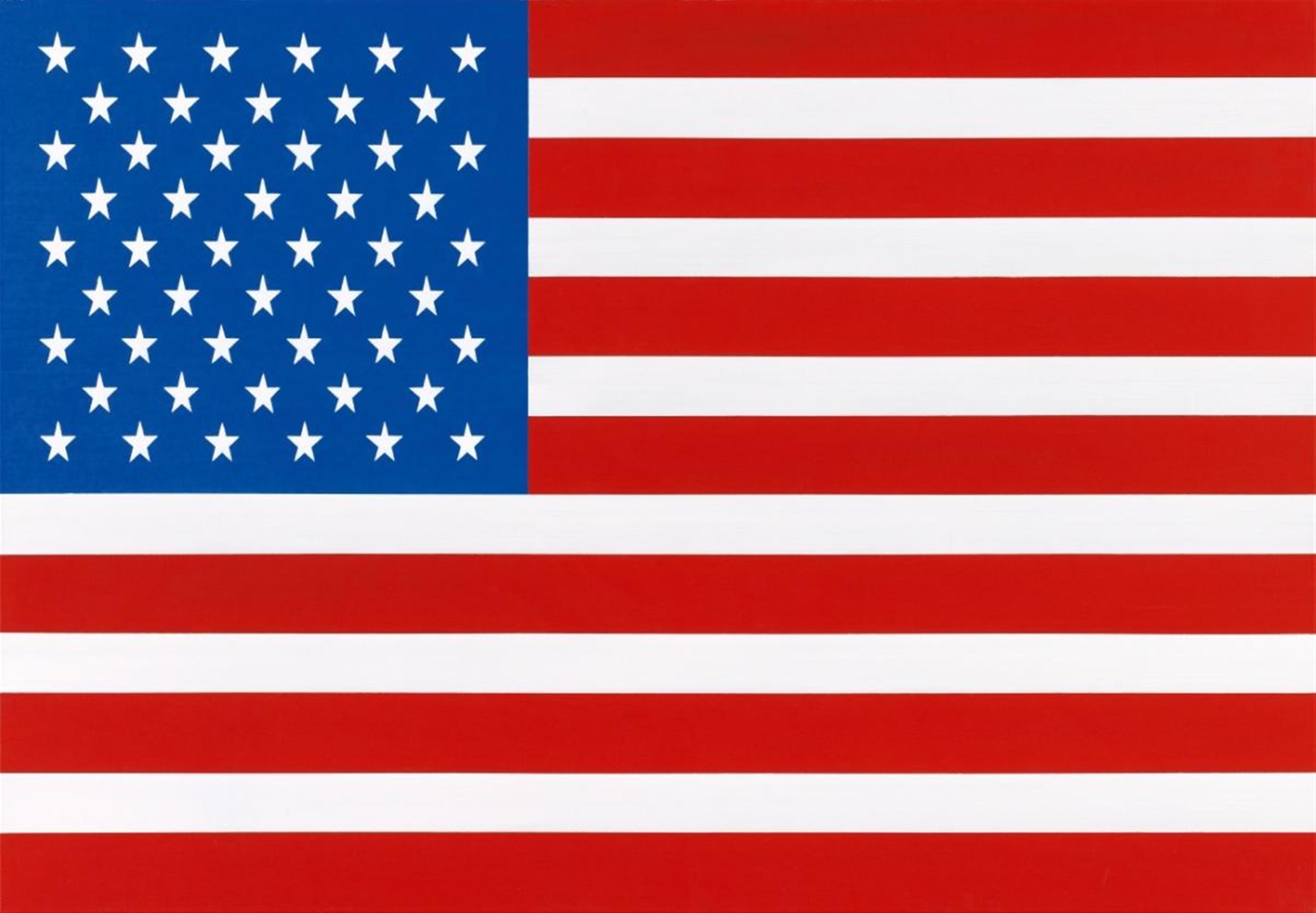Eberhard Havekost
Back to the flag
2007
oil on canvas. 107 x 154 cm. Havekost 07 BACK TO THE FLAG
Oil on canvas 107 x 154 cm, framed. The reverse signed, dated and titled 'Havekost 07 BACK TO THE FLAG' with the location 'B'[erlin] and an inscription.
Provenance: Private Collection, Germany
Exhibition: Dresden 2007 (Galerie Gebr. Lehmann), The evil, Presse + Politik, exhib.cat.p.70 with col.ill. (detail)
Havekost's artistic interest revolves around different aspects of everyday life as well as experiences and arrangements of reality in today's media age. Both his paintings and his prints (see lot no 680-686) are generally based on photos he took himself and on images from advertising, films and television. In this respect his painting “Back to the Flag” (2007) initially appears to be very different from all his other works. It shows the US flag as an absolute pictorial object and in fact as an item that fills the entire canvas. This means that the viewer is given no indication about the artist's intention. Although Havekost uses a highly symbolical motif which triggers a whole range of associations in the viewer, the composition does not tell us whether the picture is intended as a political comment or a response to contemporary history or something similar. This is not the first time that Havekost focuses on the subject of the US flag, yet in his previous works it has always been part of a portrayed activity. We can see this in a much earlier painting entitled “Kontakt” (1998), where this symbol of statehood is shown blowing in the wind, against the silhouette of a skyscraper, and a few years later (2003) the same flag re-appears in “National Geographic”, in the arms of a mountaineer. What is so indicative therefore is the radicalism with which Havekost deals with the depicted object in “Back to the Flag”. The title itself, however, does tell us something about the artist's motivation: This prototypical flag is a reference to Jasper Johns' famous painting “Flag” (1954/55) and thus deliberately to a key painting in the history of art which gave rise to fundamental theoretical reflections upon contemporary painting (see Max Imdahl, “Is it a flag or is it a painting? Über mögliche Konsequenzen der konkreten Kunst”, in: Max Imdahl, Bildautonomie und Wirklichkeit - Zur theoretischen Begründung der Malerei, Mittenwald 1981, p.69-96). At the same time, we are clearly reminded of the American artist Elaine Sturtevant who would re-create other artists' paintings one-to-one and who then added her own signature. Characteristically, she started her oeuvre in 1965 with a reproduction of precisely this flag by Jasper Johns. However, whereas Jasper Johns provoked the question of whether the “Flag” was the painting or merely the depiction of a flag, Sturtevant sought to question the very concept of originality: When is an original an original and when is it a copy? With “Back to the Flag” Eberhard Havekost found his own way of asking both these questions. What distinguishes Havekost from Elaine Sturtevant is his decision not to produce a technical duplication of Johns flag (which is what Sturtevant had done). Instead, when he put the painting on canvas, he opted for pure oil rather than encaustic on collage paper. Intellectually, he therefore primarily refers to Jasper Johns while at the same time adding a further semantic level to the depicted object. What matters to him is above all the image and not so much the actual depicted object. His focus is on the image in the viewer's head with its thousands of associations aroused by the US flag as part of popular culture. This includes, for instance, the flag as a symbol of the land of unlimited opportunities and indeed also the artistic treatments by Johns and Sturtevant. In one of his very few interviews Havekost once defined the motivation behind his paintings as follows: “I want to send logical thought on expeditions, and also our ideas of an image. I want my art to decipher our filters. It's a matter of enabling the viewer - at long last - to gain a distance from the stimuli that flood our minds, so that thoughts and images can be detached and distinguished from one another again. From a theoretical perspective, I am trying to depict several levels of perception simultaneously, within a single painting. I want to show the different working methods that are available for visual impressions and thus how we edit out certain conscious levels in order to consciously withstand the flood of imagery.” (Eberhard Havekost, “Ich male, was ich nicht sehe, Gespräch mit Florian Illies”, in: Frankfurter Allgemeine Sonntagszeitung, issue 12, 23 March 2003, p.23).
The artist's radical execution of the pictorial subject and his reference to another artist's key painting may seem somewhat unusual at first. Yet it shows us convincingly how rigorously Havekost implemented his fundamental idea in “Back to the Flag”.
Provenance
Private Collection, Germany
Exhibitions
Dresden 2007 (Galerie Gebr. Lehmann), The evil, Presse + Politik, exhib.cat.p.70 with col.ill. (detail)

